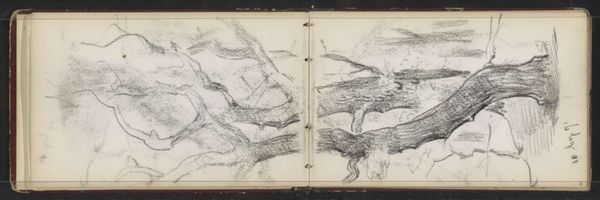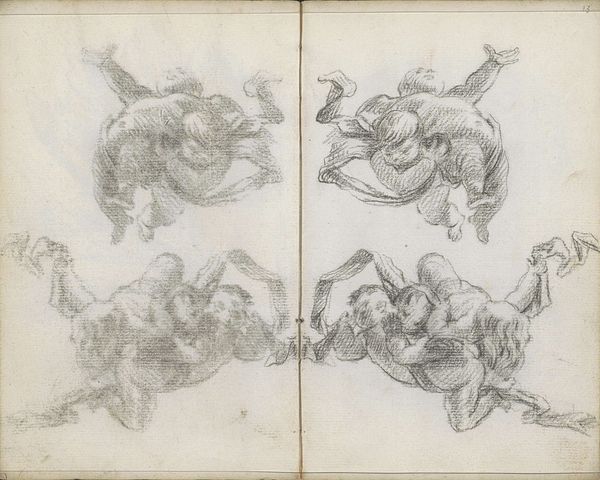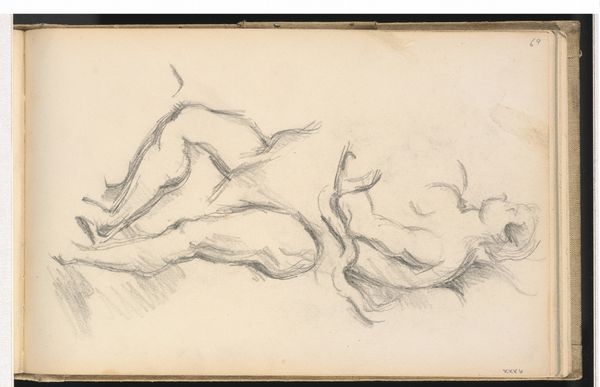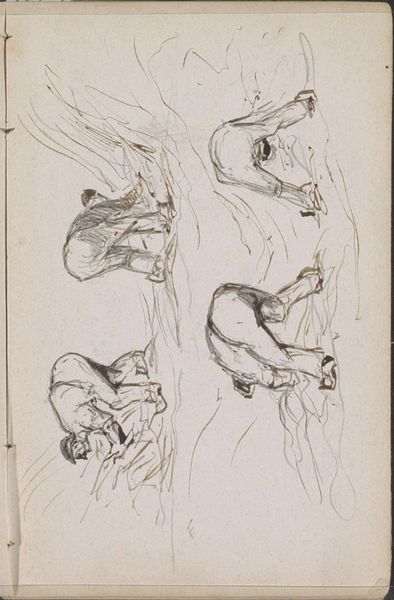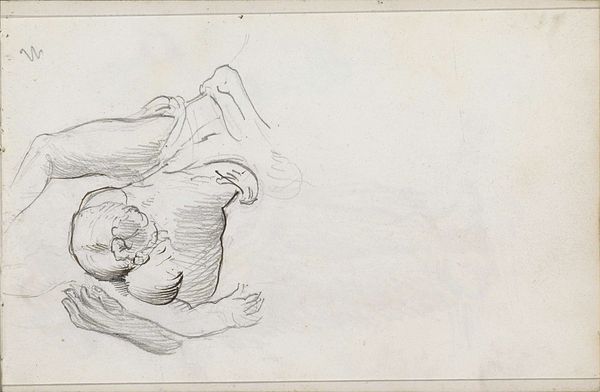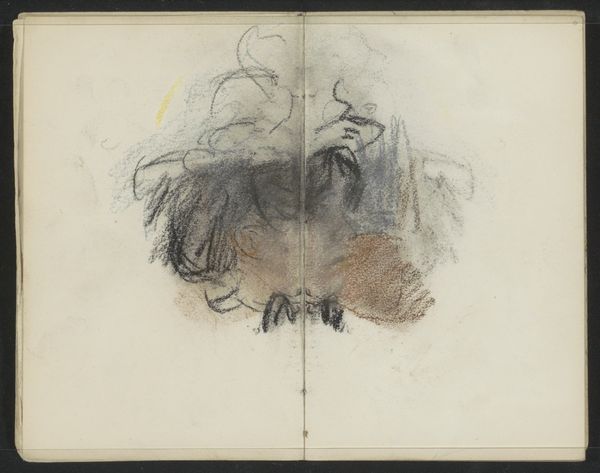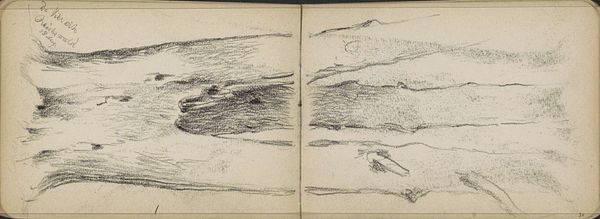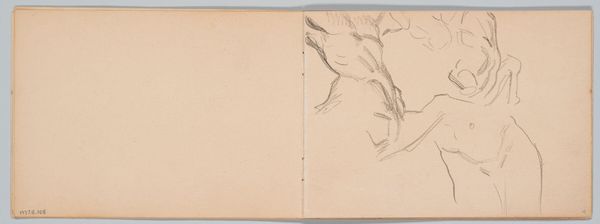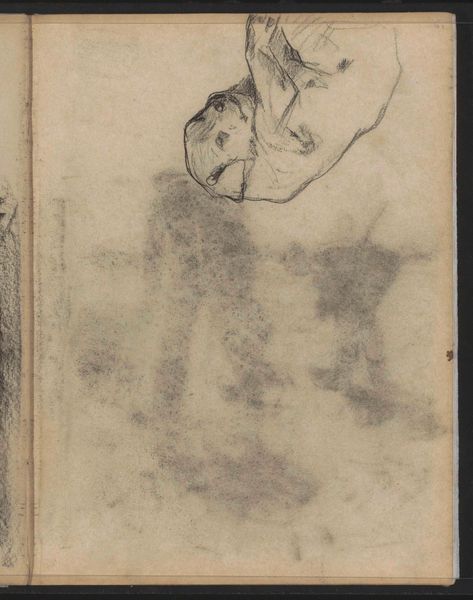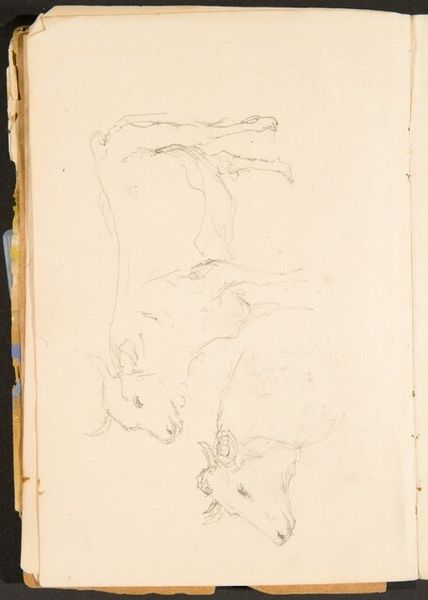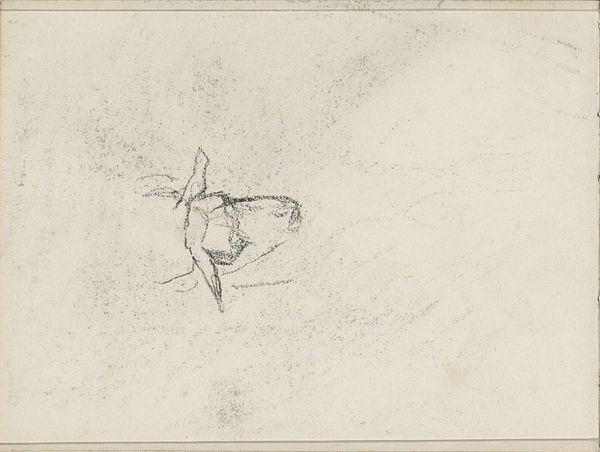
drawing, pencil, charcoal
#
drawing
#
landscape
#
pencil
#
charcoal
Dimensions: height 101 mm, width 157 mm
Copyright: Rijks Museum: Open Domain
Curator: Let's examine Willem Cornelis Rip’s landscape drawing, made with pencil and charcoal between 1891 and 1892. It is titled "Boom", which translates to "Tree" in Dutch. Editor: My first impression is one of raw energy, wouldn't you agree? The lines are so dynamic, almost violently expressive. It is clearly a scene captured in a notebook—or sketchbook perhaps—a private view for the artist’s eyes. Curator: I find that idea intriguing, especially when we look at how landscapes became powerful symbols of national identity during this period. Artists like Rip were contributing to the visual language of Dutch nationalism by portraying these landscapes. Editor: And it’s not just about subject, is it? The way he uses the charcoal—that broad, smudged application—suggests an impatience, a need to capture the essence of the tree rather than meticulously render every leaf. You can feel the weather moving and acting on this massive organism. Curator: Precisely. This sketch exists within a cultural context in which artists are trying to depict 'authenticity'. So we can see, too, how Dutch artists navigated between realism and a more expressive style. Were they adequately representing their homeland to appeal to the people? And we also must consider how these art pieces could have been seen in galleries. Editor: Looking closely, I'm struck by the economy of line. See how a few well-placed strokes suggest so much volume, so much weight? The negative space is as important as the marks themselves, defining the form of the tree in a way that feels both monumental and intimate. Curator: Yes, it presents this really interesting intersection: intimate yet, due to this kind of representation, still functioning in public as an idealized scene of the Netherlands' landscape. It speaks to how the public receives and participates in the ongoing nationalism efforts. Editor: In viewing this work, I get an interesting peek into the artist’s creative process, that moment of initial contact and exploration before something perhaps becomes more solidified or finalized. I’m very moved by that type of in-process depiction. Curator: It seems what we are looking at then is both Rip’s own encounter and contribution to this fascinating era of the Netherlands' artistic expression, right at the cusp of massive social and cultural changes.
Comments
No comments
Be the first to comment and join the conversation on the ultimate creative platform.
